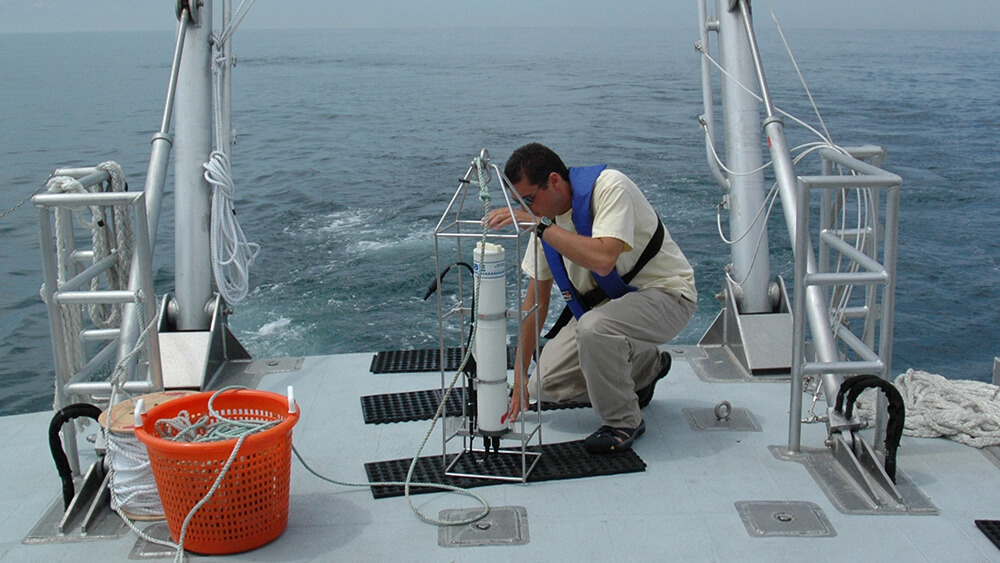Oceanography

Oceanography is the branch of science that focuses on the physical and biological properties and phenomena of the sea. Our biological studies are listed separately in this website; here, we address programs studying physical properties.
Monitoring Ocean Phenomenon
The sanctuary is a partner, providing consultation and input, to the Northeast Regional Association of Coastal Ocean Observing Systems (NERACOOS), which maintains a network of data-collecting buoys around the Gulf of Maine. Two of those buoys are located in the sanctuary. Information collected by these buoys include temperature (air and water), current speed, wave height, and many other variables.
CTD Studies: Conductivity, Temperature, Depth
- U.S. Geological Survey -- In 2017, USGS collected conductivity, temperature, and depth (CTD) data in the sanctuary to better understand the oceanographic environment.
- U.S. Bureau of Ocean Energy Management (BOEM) -- The sanctuary is working with BOEM to encourage educators, whale watch companies, and others to help build and then deploy low-cost CTDs for ocean data collection. See our education section for more information.
Currents and Drifters
The sanctuary deployed a NOAA sea surface current drifter and several student-built drifters from the research vessel Auk. Using satellite telemetry, the drifter technology provides real-time monitoring of the unit's location, providing insights into current patterns. See our education section for more information.
Internal Waves at Stellwagen Bank
The sanctuary has assisted Woods Hole Oceanographic Institution on the study of internal waves. These ocean phenomena happens when two different layers of water, usually stratified summer warm water above and colder below, are subjected to the action of some form of energy. If the force, such as a tide, acts on the bottom layer of water, it can lift it up into a wave form. The water layers stay distinct and do not mix. This wave can travel for quite a distance. Internal waves are created by tides moving over Stellwagen Bank towards Scituate. Other internal waves move through Race Point Channel and intersect with the southwest corner of the bank. Studies of these internal waves may lead to insights into predator-prey movements.
Read an article about WHOI scientists working in Cape Cod Bay and Stellwagen Bank.
Understanding Ocean Currents
The U.S. Geological Survey studied ocean currents in Massachusetts Bay, including the sanctuary. These currents mix and transport water and material in the bay, and exchange water with the adjacent Gulf of Maine. The currents can be separated into tidal currents (which fluctuate 1–2 times each day), low-frequency currents caused by winds and river runoff (which typically fluctuate with a period of a few days), and a residual current (steady over a few weeks).

